On Saturday, June 19, Saudi officials told reporters that about 25 former Guantanamo detainees, or approximately 20 percent of the 120 detainees who have been repatriated to Saudi Arabia, have returned to terrorism since being transferred. All of the recidivists had been enrolled in a rehabilitation program established by the Saudi government.
According to an account published by Agence France Presse, Saudi interior ministry spokesman General Mansour al Turki explained that “10 or 11 are believed reunited with al Qaeda in Yemen, four have been killed in anti-Qaeda operations, and the others have been rearrested and jailed.”
The Saudis have not released a list of all known Saudi recidivists. But publicly-available information reveals that the following 15 Saudis, all of whom were detained at Guantanamo and enrolled in the Saudi rehabilitation program, have reengaged in militancy or terrorism since they were repatriated to their home country.
The information presented below comes from multiple sources, including: press accounts; The New York Times‘ online “Guantanamo Docket” ; a presentation prepared by Evan Kohlmann of the NEFA Foundation (see here for a PDF of the presentation); and the Department of Defense’s April 7, 2009, analysis of recidivists (see here for a PDF of the analysis).
The 15 known Saudi Gitmo recidivists:
|
Said Ali al Shihri, former Guantanamo detainee and deputy leader of al Qaeda in Yemen. Photo from SITE. |
Said al Shihri (ISN # 372) is currently the deputy leader (#2) of al Qaeda in the Arabian Peninsula (AQAP), which is based in Yemen and was responsible for the attack on Flight 253 on Christmas Day 2009. Prior to his detention, according to the US government’s unclassified files produced at Gitmo, al Shihri was an “al Qaeda travel facilitator” who would brief “others in Mashhad, Iran on entry procedures into Afghanistan utilizing a certain crossing.” In early 2009, al Shihri was featured in an AQAP propaganda video announcing the merger of al Qaeda’s branches in Saudi Arabia and Yemen. According to press accounts, al Shihri may have been involved in al Qaeda’s attack on the American embassy in Sanaa in September 2008. Al Shihri was one of 11 former Guantanamo detainees listed on the Saudi kingdom’s most wanted list in February 2009. He was transferred to Saudi Arabia in November 2007.
Abu Hareth Muhammad al Awfi (ISN # 333) appeared in the same AQAP propaganda video as Said al Shihri in early 2009. At the time, al Awfi was a leader within the AQAP organization. He has since reentered Saudi custody. US officials identified al Awfi as a jihadist fighter in Afghanistan who was at Tora Bora in late 2001. Al Awfi was included on Saudi Arabia’s most wanted list in February 2009. He was transferred to Saudi Arabia in November 2007.
|
|
|
Ibrahim Suleiman al Rubaish. Photo courtesy of NEFA Foundation. |
Ibrahim Rubaish (ISN # 192) is AQAP’s mufti, or chief theologian and ideologue. Rubaish is responsible for formulating AQAP’s theological opposition to the Saudi royals and justifying al Qaeda’s terrorism on religious grounds. Prior to his detention, according to documents produced at Gitmo, Rubaish was trained at al Qaeda’s al Farouq training camp and served on the front lines in Afghanistan against the Northern Alliance. During one hearing at Gitmo, Rubaish also admitted that he was a jihadist. Rubaish was included on Saudi Arabia’s most wanted list in February 2009. He was transferred to Saudi Arabia in December 2006.
|
|
|
Othman Ahmed al Ghamdi, in a tape released by AQAP. |
Othman Ahmed al Ghamdi (ISN # 184) is an AQAP operational commander. An AQAP propaganda tape released in May 2010 featured al Ghamdi denouncing America. Prior to his detention, according to files produced at Gitmo, al Ghamdi was trained at al Qaeda’s notorious al Farouq camp in Afghanistan and then served on the front lines fighting the Northern Alliance for more than one year. One Gitmo memo notes that al Ghamdi “hates America.” Al Ghamdi was included on Saudi Arabia’s most wanted list in February 2009. He was transferred to Saudi Arabia in June 2006.
|
|
|
Yousef al Shihri. Photo courtesy of the NEFA Foundation. |
Yousef al Shihri (ISN #114) was Said al Shihri’s brother-in-law. He was killed in a shootout with Saudi security forces along the Saudi border with Yemen in October 2009. Yousef al Shihri was dressed as a woman at the time and his garb concealed a suicide explosives belt. According to documents produced by US officials at Gitmo, Yousef fought against the Northern Alliance in Afghanistan. The Gitmo files also note that Yousef considered “Americans his enemy” and would “fight them until he dies.” Al Shihri was included on Saudi Arabia’s most wanted list in February 2009. He was transferred to Saudi Arabia in November 2007.
|
|
|
Jabir Bin Ali Bin Jubran al Faify. Photo courtesy of the NEFA Foundation. |
Jabir Bin Ali Bin Jubran al Faify (ISN # 188) was included on Saudi Arabia’s most wanted list in February 2009. According to documents produced at Gitmo, al Faify was trained at al Qaeda’s al Farouq training camp, “fought the Northern Alliance from September through December 2001,” and met with other al Qaeda members in Tora Bora in late 2001. Al Faify also allegedly fought in Kashmir, possibly as a member or associate of Jaesh e Mohammed, an al Qaeda affiliated terrorist group. He was transferred to Saudi Arabia in December 2006.
Majeed Abdullah al Joudi (ISN # 25) was listed in the Defense Department’s April 7, 2009 analysis of Guantanamo recidivists as a “confirmed” recidivist. Documents produced by US officials at Gitmo allege that he was captured with “with al-Qaida surveillance evasion reports and after-action reports.” The DoD says al Joudi became involved in “[t]errorist facilitation” after being transferred to Saudi Arabia in February 2007.
|
|
|
Fahd Saleh Suleiman al Jutayli. Photo courtesy of the NEFA Foundation. |
Fahd Saleh Suleiman al Jutayli (ISN # 177) was reportedly killed in a shootout between the Yemeni Army and Houthi rebels in 2009. It is not clear who al Jutayli was fighting for at the time or why he was involved in the firefight. At Gitmo, US officials alleged that he was trained in al Qaeda’s al Farouq training camp and that he was a fighter at Tora Bora in late 2001. One Gitmo memo also notes: “A Foreign Government Service listed the detainee as a high priority Saudi.” Al Jutayli was included on Saudi Arabia’s most wanted list in February 2009. He was transferred to Saudi Arabia in May 2006.
Humud Dakhil Humud Said ul Jadan (ISN # 230) was listed in the DoD’s April 2009 recidivism analysis. He is considered a “suspected” recidivist because of his “[a]ssociation with known terrorists.” According to documents produced at Gitmo, ul Jadan was recruited by his brother to wage jihad in Chechnya. He then traveled to Afghanistan, where he was trained at al Qaeda’s al Farouq camp and “fought at Tora Bora and at the Second Bagram Line.” He was transferred to Saudi Arabia in July 2007.
|
|
|
Murtadha Ali Saeed Magram. Photo courtesy of the NEFA Foundation. |
Murtadha Ali Saeed Magram (ISN # 187) was included on the Saudi Arabia’s most wanted list in February 2009. According to documents produced by US officials at Gitmo, Magram received light arms training in Afghanistan and fought against the Northern Alliance while serving on both the secondary and front lines as a Taliban and al Qaeda fighter. He allegedly fled to Tora Bora in late 2001 to fight alongside al Qaeda. One Gitmo memo notes: “The detainee stated he hates Americans and all non-believers.” Magram was transferred to Saudi Arabia in November 2007.
Abd al Razzaq Abdallah Ibrahim al Sharikh (ISN # 67) was listed in the DoD’s April 2009 analysis as a “suspected” recidivist after he was arrested in September 2008 “for supporting terrorism.” According to documents produced at Gitmo, he “was motivated to travel to Afghanistan to become a martyr like his brother, who died in combat in Chechnya.” He was then trained at al Qaeda’s al Farouq training camp and allegedly admitted “that he served on the ‘front lines’ where fighting occurred.” He was repatriated to Saudi Arabia in September 2007.
|
|
|
Meshal Mohammed Rashid al Shedoky. Photo courtesy of the NEFA Foundation. |
Meshal Mohammed Rashid al Shedoky (ISN # 71) was included on Saudi Arabia’s most wanted list in February 2009. There is not much publicly-available information on al Shedoky as he was transferred from Gitmo prior to any administrative hearings being held. He was reportedly detained in a Saudi prison after being repatriated. He was transferred to Saudi Arabia in May 2003.
Abd al Hadi Abdallah Ibrahim al Sharikh (ISN #231) was included in the DoD’s April 2009 analysis as a “suspected” recidivist because he was arrested in September 2008 “for association with terrorist members” and “supporting terrorism.” According to documents produced at Gitmo, he was allegedly trained at al Qaeda’s al Farouq camp and “engaged in battle while in Kabul.” He then fled to Tora Bora after the US bombing campaign began in late 2001. He was transferred to Saudi Arabia in September 2007.
|
|
|
Adnan Muhammad Ali al Saigh. Photo courtesy of the NEFA Foundation. |
Adnan Muhammad Ali al Saigh (ISN # 105) was included on Saudi Arabia’s most wanted list in February 2009. Prior to his detention, according to documents produced by US officials at Gitmo, al Saigh received light arms training and served on the front lines in Afghanistan. Gitmo memos note that he was “on a foreign government watch list for working as a recruiter outside of Saudi Arabia” and a “foreign government service has designated the detainee as being a high priority target.” Al Saigh allegedly had ties to Abd al Hadi al Iraqi, a senior al Qaeda commander who is currently detained at Gitmo. He also allegedly fought in Kashmir under the auspices of Lashkar e Taiba, an al Qaeda-affiliated terrorist organization. He was transferred to Saudi Arabia in May 2006.
|
|
|
Turki Mash Awi Zayid al Asir. Photo courtesy of the NEFA Foundation. |
Turki Mash Awi Zayid al Asir (ISN # 185) was included on Saudi Arabia’s most wanted list in February 2009. According to documents produced by US officials at Gitmo, al Asir received weapons training at al Qaeda’s al Farouq training camp in 2001 and fled to Tora Bora in late 2001 along with his fighting unit. At the time of his capture, he was allegedly in possession of an address book that contained contact information for various nefarious Taliban and al Qaeda personalities. He was transferred to Saudi Arabia in November 2007.



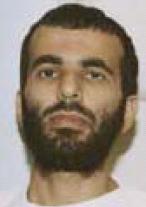
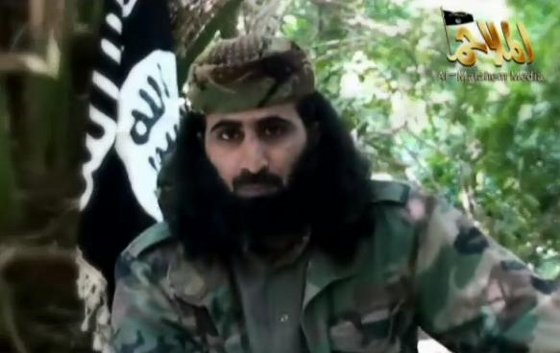
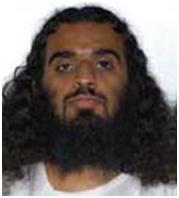
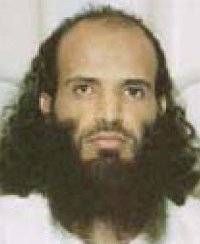
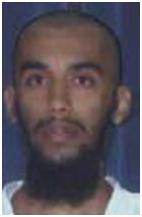
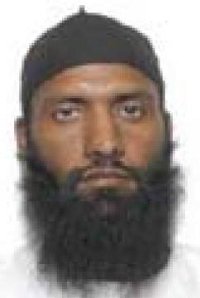
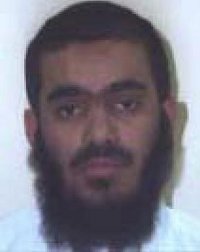
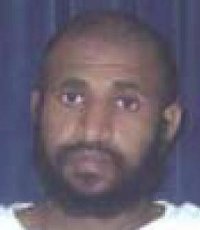
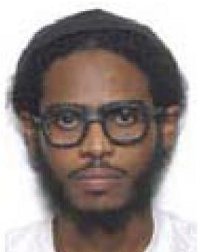







9 Comments
Excellent reporting as usual LWJ.
The catch and release scenario with these thugs is maddening though.
Someone should look at the education these saudis get from a young age ie. to hate/kill infidels is ingrained in Saudi education/culture!
In WWII, if we had captured Tojo, Yamamoto, Himmler, Göring, Rommel or any other of their types, would we have let them go? Of course not! That would have been stupid. The scum at Guantanamo were sent there because they were caught on the field of battle. Now our stupid decision to close Guantanamo has come back to haunt us. During WWII we had POW camps in the US and the POWs were treated according to international law. For more information on the subject, read “America’s prisoner of war 1943-1946” by William Oberdieck. He was on Rommel’s staff.
I think it would be more accurate to say “AT LEAST 25 out of 120 former detainees have return to terrorism” No information is presented on the other 95. For all we know, all 120 have returned to terrorism and its just that we only have confirmation on 25.
cjr – I agree with you in general though I don’t see any harm in the way it’s described in the piece which favors what we do know (confirmed) over what we don’t know, least not yet. 😉
Nice to see the details of when these people were transferred. 2006 and 2007 except for one in 2003.
Nic, all these terrrorists were transferred to Saudi well before the decision to close the Guantanamo Bay detention center was made. The transfer was a Bush administration decision for various reasons, including wanting to accede to Saudi Arabia’s wishes.
Many of the Guantanamo Bay detainees were not captured on the battlefield, and few were captured directly on the battlefield by U.S. forces. Most fighting in 2001 was done by local Afghan groups, especially the Northern Alliance. There was also a program offering rewards for handing over alleged al-quaeda people that collected people in Pakistan. That made the quality of evidence that people were terrorists (or even Taliban fighters) relatively poor.
It was a much more difficult situation than WWII prisoners of war. Much more like trying to hunt down war criminals after the war.
great post thanks alot.
Davidp,
If there is an Arab in northwest Pakistan and if he is not a Saudi govt rep then he is a terrorist.
Why else would someone be there? Any reason comes to mind?
John Abraham: “If there is an Arab in northwest Pakistan and if he is not a Saudi govt rep then he is a terrorist. Why else would someone be there? Any reason comes to mind?”
A tourist? Working for a relief agency? A teacher in a madrassa (just a religious guy not a terrorist trainer)? Anyone of lots of other ideas could come to mind.
Let’s rephrase the question: “If there is an American in eastern Iran then he is a CIA agent. Why else would someone be there? Any reason comes to mind?”
I can imagine an Iranian government official saying that. It’s not great logic regardless of who says it.
Not all Arabs are bad people. Find the “bad” AQ supporting ones and capture or kill them but leave the others alone. You can’t fight them all. You don’t need to fight them all just the ones that cause the most problems.